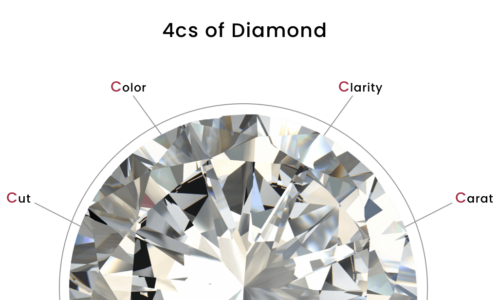
Lab-grown diamonds are making waves in the global diamond industry, and Australia is no exception. Over the past few years, the popularity of lab-grown diamonds has been on the rise in the country, with more and more consumers opting for these ethically and environmentally sustainable gems over their natural counterparts. In this article, we will explore the emergence of lab-grown diamonds in Australia and what makes them a viable alternative to natural diamonds.
What are Lab-Grown Diamonds?
Lab-grown diamonds, also known as synthetic diamonds, are diamonds that are created in a laboratory setting using advanced technological processes. Unlike natural diamonds, which are formed over millions of years under intense heat and pressure deep within the earth’s mantle, lab-grown diamonds are created using one of two methods: High-Pressure High-Temperature (HPHT) or Chemical Vapor Deposition (CVD).
HPHT involves placing a small diamond seed into a chamber with carbon and a metal catalyst and subjecting it to high temperatures and pressures. This causes the carbon to dissolve and crystallize onto the diamond seed, creating a larger diamond.
CVD, on the other hand, involves heating a gas mixture containing carbon and hydrogen until it breaks down and deposits layers of carbon onto a substrate. The carbon atoms then bond together to form a diamond crystal.
Why Choose Lab-Grown Diamonds?
One of the primary reasons for the increasing popularity of lab-grown diamonds is their ethical and environmental sustainability. Unlike natural diamonds, which are often associated with environmental destruction and human rights abuses in diamond-mining regions, lab-grown diamonds are created in a controlled laboratory environment without any harmful environmental or social impact.
Lab-grown diamonds are also often less expensive than natural diamonds, making them an attractive option for consumers looking for high-quality, affordable jewelry. Additionally, lab-grown diamonds offer more design flexibility, as they can be created in a wide range of sizes, shapes, and colors to meet the specific needs and preferences of individual consumers.
The Emergence of Lab-Grown Diamonds in Australia
Australia has a long history of diamond mining, with the Argyle diamond mine in Western Australia being one of the largest producers of natural diamonds in the world. However, with the depletion of the Argyle mine’s reserves and growing concerns over the environmental and ethical impact of diamond mining, the country has seen a rise in demand for lab-grown diamonds in recent years.
Several Australian companies have emerged as leaders in the lab-grown diamond industry, including Pure Diamond, an Australian-owned and operated company that produces lab-grown diamonds using the HPHT method. Pure Diamond’s lab-grown diamonds are of the highest quality and can be created in a range of colors, including pink, yellow, and blue.
Another Australian company, Diamond Exchange, offers a wide range of lab-grown diamonds in various sizes, shapes, and colors, all of which are certified by the International Gemological Institute (IGI).
The Future of Lab-Grown Diamonds in Australia
The future of lab-grown diamonds in Australia looks bright, with the market for these sustainable and affordable gems set to grow exponentially in the coming years. As more consumers become aware of the ethical and environmental concerns surrounding natural diamonds, lab-grown diamonds are likely to become the preferred choice for those seeking high-quality, sustainable, and affordable jewelry.
Moreover, with advances in technology and increased investment in the lab-grown diamond industry, it is likely that lab-grown diamonds will continue to improve in quality, affordability, and design flexibility. This could lead to further disruption of the traditional diamond industry and a shift towards more sustainable and ethical alternatives.
Conclusion
The emergence of lab-grown diamonds in Australia represents a significant shift in the diamond industry and consumer preferences. As consumers become more conscious of the environmental




